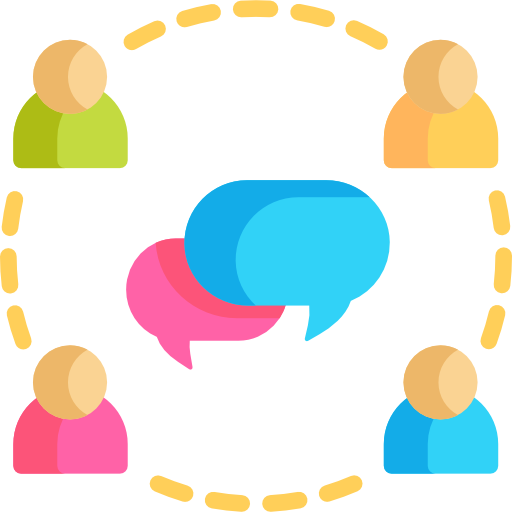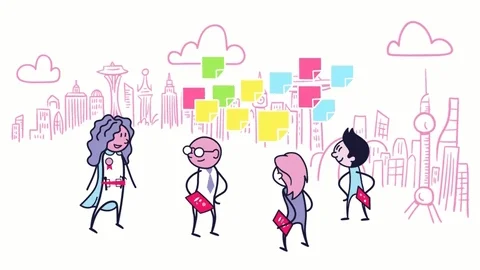 Photo by Mimi Thian on Unsplash
Photo by Mimi Thian on UnsplashAre you interested in upping your teamwork game?
Whether you’re just entering the workforce or a student diving into group work at school or college, these strategies will empower your group members to collaborate and overcome challenges.
Collaborative Problem Solving

What is it?
Collaborative problem-solving happens when a group of people work with each other to share information and ideas and gain insights into others’ perspectives. The purpose is to build on and value the ideas shared by group members to achieve a common goal.
 Why is it important?
Why is it important?
Collaborative problem-solving builds trust in a group. It also adds a level of commitment between group members, with everyone coming together to take ownership of the situation and find a creative solution.
This may sound easy, but getting others on board may be tricky! These four strategies are sure to help you and your team solve problems together in no time!
1. Establish Clear Goals and Rules

Setting clear goals and rules immediately will help your team run smoothly and effectively, minimizing conflict, confusion, and frustration.
Pinpoint the problem you're tackling. Define how success will be measured and recognized.

Assign roles and responsibilities for each team member so everyone knows the expectations and feels accountable.

Communication is important! Decide when, where, and how often communication will happen to keep everyone on the same page.

Addressing these areas will set your team up for success.
2. Create a Supportive Environment
 Photo by Dim Hou on Unsplash
Photo by Dim Hou on UnsplashBuild trust, respect, and open communication.
Creating a strong community will encourage group members to lean on each other's strengths and ideas. This will create an environment where diverse perspectives are valued and members feel safe to share their opinions and possible solutions.
 Patience
Patience
Group members need to have patience! Solutions may take time to develop. Multiple meetings may be necessary before a solution is found. Leading by example and practicing mindfulness and stress-relieving techniques will create a calm and supportive team culture.
 Resources
Resources
Ensure your team has what they need to solve the problem. This might include written guidelines or certain types of technology.
 Empathy and Active Listening
Empathy and Active Listening
Team members must feel heard and understood to create a collaborative culture. Putting yourself in other's shoes and listening to their perspectives will encourage your team to find effective solutions.
3. Choose Activities that Fit Your Goals and Audience

Get creative with how to collaborate about a problem! What strategy you choose depends on your purpose, situation, and audience. Some examples may include:
 Brainstorming
Brainstorming
This allows people to think about and contribute ideas more freely. It also encourages others to hold back judgment and provides space for a wide range of possible solutions to be shared.
 Mind Mapping
Mind Mapping
Mind maps provide a visual way to map out possible solutions to a problem. It helps make connections between situations and ideas.
 Role Playing
Role Playing
Allows team members to gain different perspectives on the problem. It also helps gain empathy and understanding of the problem.
 Simulations
Simulations
Allows groups to use realistic scenarios to understand the problem and determine a solution in a safe and judgment-free environment.
 Puzzles
Puzzles
Promote a fun and relaxed way to solve problems using clues and riddles using teamwork.
 Escape Rooms
Escape Rooms
Provide more of a general team-building activity to encourage collaboration and problem-solving.
4. Celebrate Successes and Manage Setbacks

Celebrating successes and failures provides opportunities to learn, grow, and improve and helps build a team atmosphere.
 Celebrating Success
Celebrating Success
Helps lighten the mood
Boosts morale and motivation
Makes people feel appreciated
 Managing Setbacks
Managing Setbacks
Helps develop a growth mindset
Gives people a chance to reflect and reset
Allows team to build on each other's areas of growth
Overall, it reinforces the value of teamwork and encourages the group to overcome setbacks.
Quiz: Doug and Sarah's Team Disagreement

During a team meeting, there is a disagreement about the best way to handle an issue. Sarah wants to avoid drastic changes and stick to familiar methods, but Doug wants to think outside the box and try new ideas. How should the team proceed?
A. Follow the conservative approach to be on the safe side.
B. Move ahead with the creative solution so a quick decision can be made.
C. Discuss the pros and cons of both perspectives, allowing team members to share their opinions.
D. Decide to put off the decision until a later date.
Quiz
How should the team proceed?
Take Action
Your feedback matters to us.
This Byte helped me better understand the topic.

